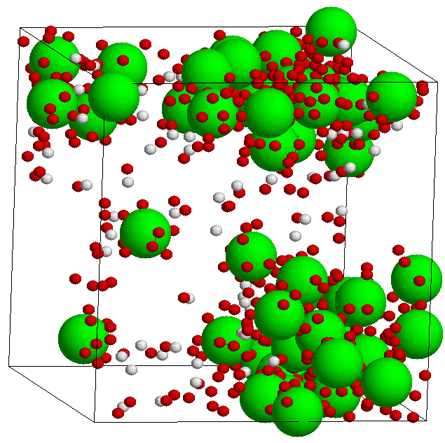162t Critical Point of Electrolyte Mixtures
The critical behavior of electrolyte mixtures is studied using grand canonical Monte Carlo simulations. Mixtures consist of large multivalent macroions and small monovalent co- and counterions. The system can be viewed as a binary mixture of macroions (with their counterions) and salt (co- and counterion pair). The primitive model description is used, in which the ions are point-charges with a hard core and the solvent is treated as an uniform dielectric continuum. The grand canonical simulations are based on insertions and removals of neutral molecules: macroion with its counterions or coion and a counterion. We propose a distance biasing method that enables direct grand canonical simulations up to charge asymmetry 10:1. We calculate the critical loci that connects the salt-free state, which consists of only macroions and counterions, with the pure salt state using mixed-field finite-size scaling with no pressure mixing. The critical parameters are determined for macroion to counterion charge-asymmetries of 2:1, 3:1 and 10:1. Our results suggest that binary electrolyte mixtures are type-I mixtures, where the two-components mix continuously.
[1] A.-P. Hynninen, M. Dijkstra, and A. Z. Panagiotopoulos, J. Chem. Phys. 123, 084903 (2005).
